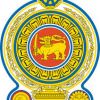මහා බ්රිතාන්ය මහ කොමසාරිස්
Diversity
Sri Lanka is a small miracle partly due to the compact physical diversity of this pearl-shaped island - but, as we shall see, this diversity extends to virtually every aspect of life. Fringed by variously-shaped sublime beaches, from straight expanse to rocky cove, the island possesses a coastal plain containing a host of geographic features such as lagoons, wetlands, rivers and various types of wildlife-rich jungle. The plain ends in the central area where the land starts to ascend into mist-shrouded mountains, covered in forests of wind-stunted trees (in fact there are seven different types of forest in Sri Lanka), plains known as patanas, and rolling tea plantations. In addition, the hillsides are invariably punctuated by dramatic waterfalls. For its size Sri Lanka has perhaps the largest number of waterfalls of any country.
People
Sri Lanka is a multi-ethnic, multi-religious and multi-cultural society, a reflection of the island’s encounter with successive foreign immigrants. But it all began with indigenous people, the Veddahs, hunter-gatherers who exist today.
The main ethnic groups are the Sinhalese and Tamils, both originally from the Indian subcontinent. Then there are Muslims, who settled in the island from the time it became an ancient trading centre. Similarly, Malays and Chinese were also attracted to the island. The Portuguese and British brought with them Kaffirs from Africa, and the Dutch an assortment of European traders, the Burghers. There are other communities too, the Chetties from South India for example . . . the list is extraordinary.
Whatever their situation in society, the people of Sri Lanka possess a warm and friendly nature reflected in persistent smiling faces and eagerness to help those unfamiliar with aspects of local life. You’ll find that Sri Lankans are very hospitable and take pride in inviting people to their homes, however modest they may be. So don’t be surprised if a driver or guide, or indeed virtually anyone encountered, requests the pleasure of your company. And don’t decline, as Sri Lankan hospitality is taken very seriously!
Cultural Heritage
Sri Lanka’s cultural depth is recognized by UNESCO, which has declared six archaeological World Heritage Sites in the country:
The sacred city of Anuradhapura
The ancient city of Polonnaruwa
The golden temple of Dambulla
The ancient city of Sigiriya
The sacred city of Kandy
The old town of Galle and its fortifications
(The seventh World Heritage Site in Sri Lanka is an ecological example, The Sinharaja Forest Reserve.)
From enormous dagobas (dome-shaped structures) and remains of ancient buildings in the ruined cities of Anuradhapura and Polonnaruwa, to the awesome stairway to the temple at Dambulla and the sensual frescoes of heavenly maidens at the palace at the rock of Sigiriya, visitors can experience these World Heritage Sites within a compact area called the Cultural Triangle.
In the hill country lies the former ro
Listing Details
Address
හයිඩ් පාර්ක් උද්යානය ලන්ඩන් ඩබ්ලිව්2 2එල් යූ,, එක්සත් රාජධානිය
Telephone
020 7262 1841
Fax
020 7262 7970
Website



